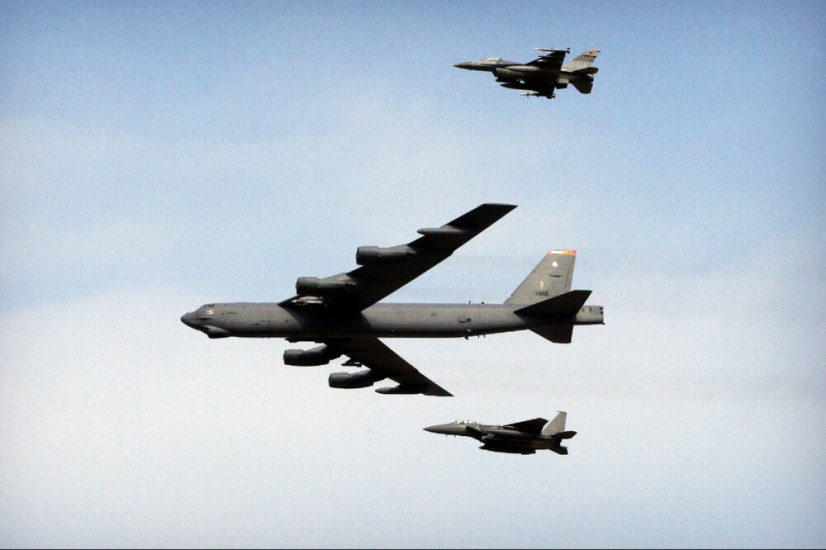U.S. flies B-52 bombers in Persian Gulf amid mounting tensions

“Potential adversaries should understand that no nation on earth is more ready and capable of rapidly deploying additional combat power in the face of any aggression,” General Kenneth F. McKenzie Jr., the head of the U.S. military’s Central Command, said in a statement on Thursday.
“We do not seek conflict, but we must remain postured and committed to respond to any contingency,” General McKenzie said, according to the New York Times.
The flight comes on the heels of the assassination of Iran’s top nuclear scientist Mohsen Fakhrizadeh late last month.
Fakhrizadeh, a senior nuclear and defense scientist, was assassinated in a small city east of Tehran on November 27.
Iran has blamed Israel, which has carried out assassination operations against Iranian nuclear scientists over the past decade. Immediately after the assassination, Foreign Minister Zarif said in a tweet that the attack was carried out with “serious indications of Israeli role”.
Over the past years Israel assassinated five other Iranian nuclear scientists. It killed Masoud Alimohammadi, Majid Shahriari, Darioush Rezaeinejad, and Mostafa Ahmadi Roshan. Israel also attempted to assassinate Fereydon Abbassi, Iran’s head of the Atomic Agency, but it failed.
The Thursday mission also included aircraft from Saudi Arabia, Qatar and Bahrain. It came days after the U.S. military moved the USS Nimitz aircraft carrier, along with other warships, back into the Persian Gulf.
The U.S. military is on heightened alert and shoring up its forces in the Middle East to respond to a potential Iranian attack, a military official told POLITICO.
According to the unnamed official, the Pentagon is concerned that Tehran could take advantage of the presidential transition and U.S. troop withdrawals from Iraq and Afghanistan, as well as the upcoming anniversary of the U.S. assassination of Iran’s top general Qassem Soleimani.
“There is no plan here to act, there is a plan to portray a strong defensive posture that would give a potential adversary pause,” the official added.
Last month, the New York Times cited four current and former U.S. officials as saying that Trump has asked senior advisers in an Oval Office meeting whether he had options to take action against Iran’s main nuclear site in the coming weeks.
A range of senior advisers dissuaded the president from moving ahead with a military strike, said the Times, adding that the advisers — including Vice President Mike Pence; Secretary of State Mike Pompeo; Christopher C. Miller, the acting defense secretary; and Gen. Mark A. Milley, the chairman of the Joint Chiefs of Staff — warned that a strike against Iran’s facilities could easily escalate into a broader conflict in the last weeks of Trump’s presidency.
Former Iranian Defense Minister Hossein Dehghan later warned that a full-fledged war could break out between the U.S. and Iran, saying while Iran is ready to defend itself, it does not welcome war.
“A limited, tactical conflict can turn into a full-fledged war,” he said. “Definitely, the United States, the region and the world cannot stand such a comprehensive crisis,” Brigadier General Dehghan said in an interview with the Associated Press last month.
“We don’t welcome a crisis. We don’t welcome war. We are not after starting a war,” he said. “But we are not after negotiations for the sake of negotiations either.”
Source: Tehran Times

